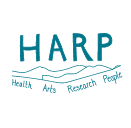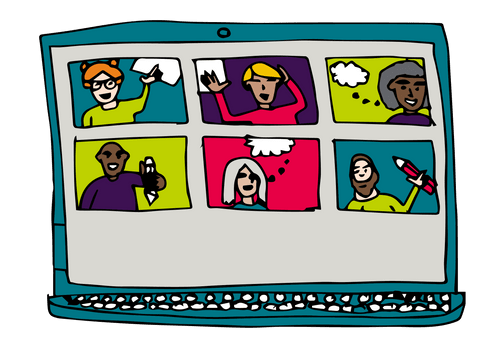The evidence shows the arts have a huge amount to offer health and care systems. But, bringing innovation in arts and health to life requires strong relationships and partnerships between artists and health care workers.
How can teams build the right foundations for change? How can arts and health practitioners develop strong and embedded partnerships to create quality work that health and care leaders buy into?
In an online session facilitated by Nesta’s People Powered Results, HARP shared its recommendations for health and care leaders and HARP-supported teams shared their experiences of building collective power to tackle deep-rooted health challenges.
Here were a few of the many takeaways from that discussion…
- Artists should spend time engaging with and understanding the challenges health systems are facing.
Johan B. Skre, Arts-on-Prescription Manager for Swansea Bay University Health Board, said: “[This learning] would have helped me understand how the arts could fit into a very chaotic situation for our health board. Based on this learning we have set up an Arts and Health Forum, which started in March 2022. It’s a cross-disciplinary forum where we try to engage the arts, community workers, health workers, artists and art organisations.
“Last year, when we applied for strategic Arts Council funding for another project, before touching the application we went straight to our mental health department and asked what their biggest challenges were. The answer was staff mental health and suicide prevention.
“We involved the mental health department and staff wellbeing service in the application [which was successful] and they, in turn, invited us to co-produce a large staff wellbeing project that is currently rolling out to our 12,500 members of staff.”
- When approaching arts and health projects, keep it simple and find universal connection points.
Eric Ngalle Charles, lead artist on HARP’s Doing the ‘write’ thing project: “[The stories] are from 10 black NHS workers, but these are universal stories. There are a lot of things that will resonate with a lot of people. Initially, when we started [this project], I had no idea where we were going with it because I was already overwhelmed with the amount of paperwork that was sent to me as a writer. So, I had to think about our approach. I had to keep it simple.
“As a writer, I didn’t bombard participants with questions, I just asked ‘how are you?’ And I think my work was made even easier because some of the people I interviewed were familiar with [it]. I also wasn't from the organisation. When the [COVID-19] pandemic started, I was in Cameroon. I thought my mother was going to die because in Cameroon we only had one ventilator for 25 million people. This became a conversation starter and people participated freely.”
- Do the groundwork when starting a new arts and health innovation and remember, it’s good to talk.
Jain Boon, freelance artist on HARP project ‘Messages of Hope’, said: “Talk to your community and the people using the services, past and present, and the people they work with. We had quite a few conversations with [New Pathways’] independent sexual violence advisors. And just accept that sometimes as artists we do things differently, but we can learn from each other.
“Health organisations, we invite you to start the conversation with us (artists). We have lived experience or are directly impacted by the challenges you face. We’re your communities. We want to support and problem solve [them]. Artists are an asset within your community. You’re not alone. Take one step at a time and deal with hopefulness. We know we will make change, we’ll do that together.”
- Health care leaders should be brave and innovative.
Dee Udeze-Chibuzor, Head of Workforce Transformation and Planning at the Welsh Ambulance Service NHS Trust, who was part of the ‘Doing the Write Thing’ team, said: “Doing something the same way over and over and expecting a different result is ridiculous. Maybe it’s time to step outside the box and try something new. This is key. It’s unfortunate that is has to be funded, but maybe there are ways to work across organisations.
It’s just [about] widening your perspective and the way you think, and that’s exactly what I’m doing within my organisation.”
Mike Wilkinson, New Pathways’ Deputy CEO, said: “When you’re looking at services within a financial year, the inclination is to fall back on what you currently do, to play it safe… But we’ve got to be brave. We have to be innovative.
“HARP came along and threw a pebble in our pond. It created a splash, which was slightly uncomfortable, but the ripple effect has carried on. We’ve just supported a former client, who’s done a one-woman show at the arts centre. We are hoping to be involved in a sexual violence arts festival, and we want to bring it to Wales next year. Throw a pebble in your pond, see where the ripples take you. You will not be disappointed.”
The art of system change was co-hosted by HARP and Nesta People Powered Results
Speakers were Johan Skre (Swansea Bay University Health Board), Jain Boon (Freelance Theatre Director), Mike Wilkinson (New Pathways), Dee Udeze (Wales Ambulance Service).
Watch the full recording below...

